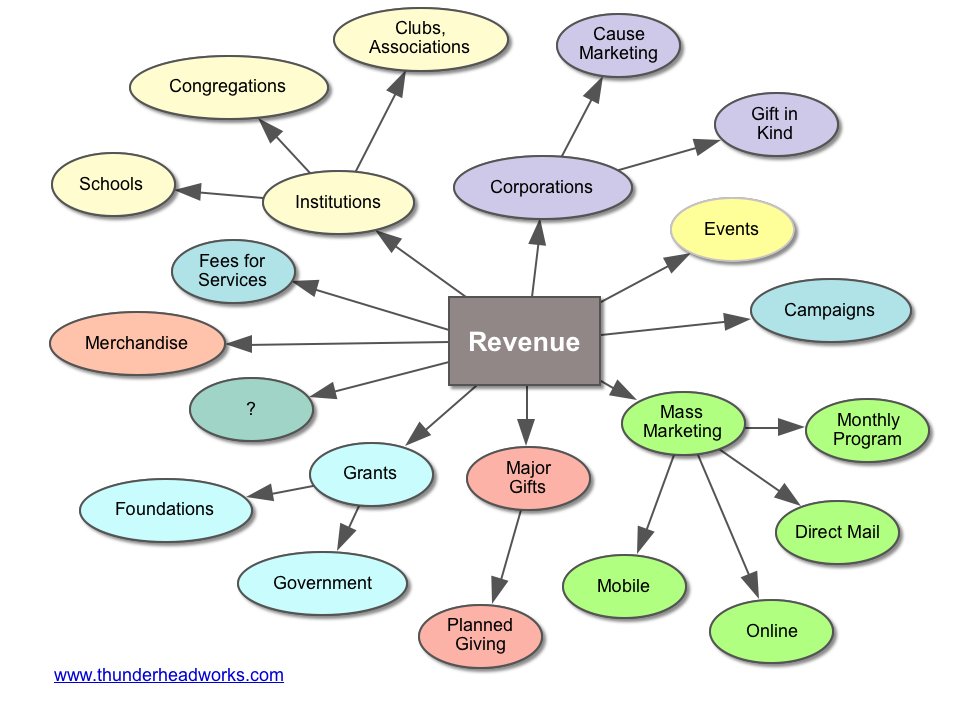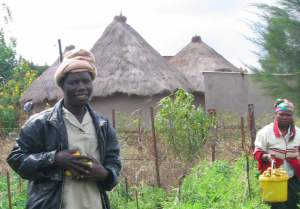
Are you monocropping? Does your group get most of its funds from just one source? Need a diverse revenue stream? If so, you may want to meet the Matidzas.
 In a small South African town, Anna and William Matidza practice integrated farming, and when I visited, I saw that it made a huge difference. On their half acre they grow tomatoes, cabbage, sugar cane and onions—for their family and to sell in the village market. They sell fruit from trees they planted: papaya, peach, mulberries, mango, citrus, guava. With the profits they put in irrigation and built a piggery with cement blocks. So they sell pigs, and where they used to buy 150 bags of manure, it’s now free. By local standards, they are doing very well. They have diverse revenue sources. Why their neighbors (who can see their success) don’t also have integrated farms puzzles the Matidzas.
In a small South African town, Anna and William Matidza practice integrated farming, and when I visited, I saw that it made a huge difference. On their half acre they grow tomatoes, cabbage, sugar cane and onions—for their family and to sell in the village market. They sell fruit from trees they planted: papaya, peach, mulberries, mango, citrus, guava. With the profits they put in irrigation and built a piggery with cement blocks. So they sell pigs, and where they used to buy 150 bags of manure, it’s now free. By local standards, they are doing very well. They have diverse revenue sources. Why their neighbors (who can see their success) don’t also have integrated farms puzzles the Matidzas.
In monocropping year after year you grow one crop, such as corn, that requires costly (and poisonous) fertilizers and pesticides. If a disease or drought comes, too bad. A healthy farm is a mix that works together. The soil is enriched by inputs of water, manure, crop residue. There’s a proper place for nature, for songbirds and other wildlife. A blend of economic enterprises support each other: manure from the animals feeds the grasses and crops, grasses and crops feed the animals. Bees provide honey and pollination, often doubling crop yields. If one activity has a bad year, the others make up for it.
Your nonprofit’s enterprises should mix in ways that create harmony and sustainability. Chances are most of your revenue comes from one or two programs. By all means, keep building these programs; they’re your bread and butter. But don’t diversify at your own risk. Create a well-rounded fundraising portfolio to increase revenue year after year. Target new markets while improving the existing ones that work now.
Why do you need a diverse revenue stream?
Discover your Cash Cow. Perhaps most important, many nonprofits are small because they haven’t yet discovered their big, signature fundraising program—Girl Scout cookies, annual event, niche for government grants. In an article about why groups don’t need to diversify (they’re talking about the largest groups, I’m not), William Foster and Gail Fine talk about a time when diversifying does make sense. They interviewed the leaders of some of the largest nonprofits:
Only a few of the 21 interviewees knew from the start where they would find their most promising funding sources. Often, they were uncertain about which source was most promising. But as these organizations pursued their growth, they realized which sources of funding seemed most promising and were willing to concentrate their efforts on that source, recruiting people and creating organizations that could best pursue that funding source.
Over time, an incubator of several fundraising programs—with regular tweaking—will help you discover that big revenue stream.
Lessen the chances of a financial disaster. If something goes wrong with that one big event or mailing, you could be in trouble. For example, distraction by a major catastrophe (like September 11 or a natural disaster), could wipe out your chances of reaching revenue goals. Diverse revenue sources and different revenue seasons lessens your risk.
Reinforce your brand. The relationship is deepened as supporters and potential supporters see you in more places of their world.
The different streams feed each other, so 1 + 1 = 3. Mass marketing creates a large pool of supporters who will connect you to major gifts or corporate partnerships, and introduce you to their congregation, school or a foundation. A grant or corporate gift can add to your credibility. A school program can generate many small first-time gifts from potentially long-term donors. And so on. (I don’t have enough space here—wasted too much talking about farming!—to go into the ways different fundraising programs help each other. More on this in a future post.)
Photo: Peter Kuttner

No comments yet.